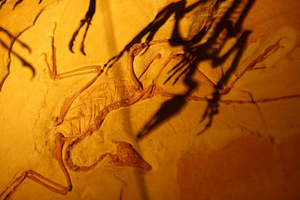Picture of a T rex Fossil
 |
| Picture of a T rex Fossil |
Scientists have long debated whether or not the fossil record really proves the legendary Tyrannosaurus rex would have been a ferocious hunter or perhaps a scavenger that feasted on carcasses in the dead.
Previous discoveries of dinosaur bones from the bellies of T. rex fossils, and also T. rex-shaped bites from the tails of other dinosaurs, have strongly suggested that the late Cretaceous (66-100 million years ago) beast was obviously a predator.
But palaeontologists weren't able to eliminate that T. rex was an opportunistic scavenger, and scientists the latest research still cannot disprove that theory.
What researchers have described from the Proceedings from the National Academy of Sciences, an american journal, could be the first discovery of an broken T. rex tooth in another dinosaur bone - in such cases, inside the vertebrae of a plant-eating hadrosaur.
"What we will easily notice because of this with no shadow of a doubt is a T. rex engaged a full time income hadrosaur," said lead author Robert dePalma, from the Palm Beach Museum of Natural History in Florida.
"What this present specimen does would it be allows you essentially recrown the king," he told AFP.
The bones were uncovered in 2007 in the Hell Creek Formation, a prominent dinosaur fossil field that spans aspects of Montana and North and South Dakota.
Poking from two fused vertebrae is often a major slice of a T. rex tooth - a highly-preserved crown 3.75 centimetres (1.5 inches) long.
T. rex teeth were as large as bananas, plus they could regrow any lost during their lifetimes, similar to sharks do today, de Palma said.

No comments:
Post a Comment